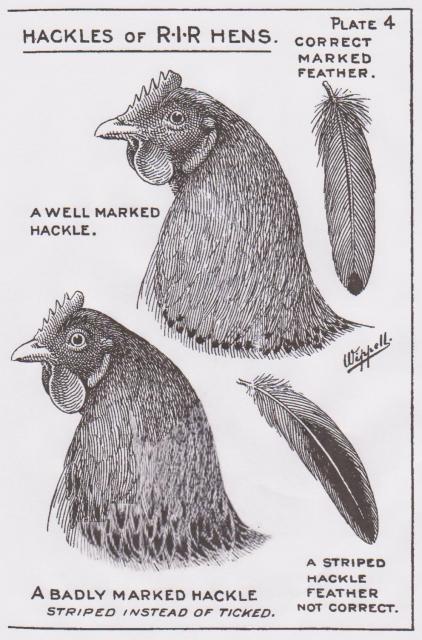I came across this post by chris09 on this thread


Follow along with the video below to see how to install our site as a web app on your home screen.
Note: This feature may not be available in some browsers.

This is one of my favorite pictures I have in my computer and I think it came out of a English R I Red book years ago.I came across this post by chris09 on this thread

This is one of my favorite pictures I have in my computer and I think it came out of a English R I Red book years ago.
When you are starting out dont kill a female because she has stripes because she may have legs dead center, width of back to the oil glands, level wings and a great head. Fix the traits for type first. Get them stamped into your line then once all your females has that classic brick shape , width of back, level wings, extended keel and a good head you can hammer away on this color issue.
Having a good colored R I Red with type defects is not going to do you any good for your strain.
Great observation, ticking in the neck female is the key to breeding for color.
To me there are breeding hens and there are exhibition hens, a exhibition hen will have the real nice ticking in the hackles that the standard calls for but a breeding hen will have a little extra "color" to her hackles weather it be lacing or the whole hackle feather has a dark/er appearance.Absolutely. Too much black in the female hackle is better than too little. It's a lot easier to reduce the black than it is to get it back if it's all gone. Females with no black in the hackle will also have too litle black in the wings & tails that are red where they should be black. When that happens you're at least 3 years away from getting the colour back where it belongs. There's even a place in a breeding program for a male with good type & black in the hackle.
Always remember, type, type type. it's much easier to fix colour than it is to fix type.
A few posts back there was mention of birds narrowing toward the rear. I always tell people to cull for red type from the top, not just from the side. A good Red needs to carry width from the shoulder to the tail. You don't want a wedge shaped bird.